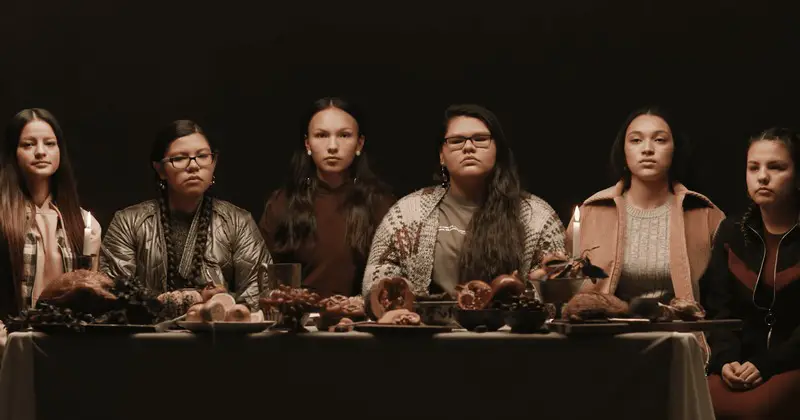These Native American Girls Explain The True History Of Thanksgiving That People Don’t Know About
Tags: opinion

These 6 girls talk about their frustration at watching the entire country celebrate Thanksgiving while growing up, which held painful implications.
As American kids grow up, they start to believe that Thanksgiving is synonymous with spending time with the family, good food, giving thanks, and is also the beginning of the winter holidays.
Subscribe to our Youtube channel, new videos every week:
However, for some people, this holiday is a reminder of the painful past, of loss and injustice. Americans chose to keep the dark parts out of common knowledge but 6 Native American girls chose to set the record straight by sharing the untold story behind this joyful national holiday.
The 6 Girls Who Talk About Thanksgiving
Duannette Reyome, Evannah Moniz-Reyome, Laurel Cotton, Wanbli Waunsila Win Eagle, Wacantkiya Mani Win Eagle, and Kiera Thompson chose to reveal the real history behind this festival, back in 2016. The girls talked about their frustration while sitting behind a table that was full of traditional Thanksgiving dishes. They spoke about their pain as they had to watch the entire country celebrate a holiday that had painful connotations for them, as they grew up.
“Happy Thanksgiving, America. I’m Daunnette and I’m here with my friends to tell you the real history behind this holiday,” Reyome, a model, breaks the ice in the video.
Reyome explained that the story about this national holiday was not true at all. The real story behind Thanksgiving saw European settlers destroy and kill an entire village. They then celebrated the killings and gave thanks.
Abraham Lincoln, one of the most famous presidents of the USA, made it an official holiday. He had ordered 38 men from Dakota to be hung for crimes related to the war, as per Wanbli Waunsila Win Eagle and Wacantkiya Mani.
“We take this time to remember our elders who lost their lives due to what really happened,” said Moniz-Reyome.
For the Indigenous people, this holiday is actually a National Day of Mourning. It is a reminder that millions of their ancestors were slaughtered and their lands were stolen. The racism that they face as a community, exists to date.
Moniz-Reyome added that her mother, usually, makes Native American dishes for them and they all pray together.
Wacantkiya felt annoyed at the fact that people didn’t actually know what happened on that day. Americans were, basically, celebrating the murders of several people and tribes that were lost completely.
“Whether it is to give thanks or to be with your family, you should learn how that holiday was established in the first place.”
Concluding The Video
The girls ended the video by being thankful for all the things they had received. They were thankful for being born indigenous to America, they were thankful for having their cultures and also thankful at how their elders managed to keep their culture alive, even though they had been through a lot.
Matika Wilber, who belonged to the Tulalip and Swinomish tribes, explained, “Parents can start by telling their kids the truth and offering their children the more complex narrative. Kids are smart and capable of understanding.” She believes that the story of Thanksgiving revolves around white supremacy and can be fixed only if the parents choose to tell the truth to their children.
Read: Giant Grocery Store Apologizes For “Plan For A Super Spread” Thanksgiving Ad
“Thanksgiving is rooted in a historical fallacy,” Wilbur continued. “The main Pilgrim narrative coincides with colonization that was inherently oppressive and brutal.”
Paula Peters Shares Her Own Perspective
Paula Peters, the journalist, believes that the perspective of the Wampanoag tribe must be shared with the public. It might be difficult for the parents as they have to talk about raw topics in order to make their children understand, clearly. Peters was a citizen of Mashpee Wampanoag Tribe and added, “Quite honestly, cherry-picking that moment when the Wampanoag and Puritans happen to break bread as the ‘Kumbaya’ moment really does not do it any justice. The Wampanoag have been marginalized and forgotten and the back story is so incredibly critical for what ultimately happens.”
Featured Image Credits: Jisha Joseph
Leave Comment: